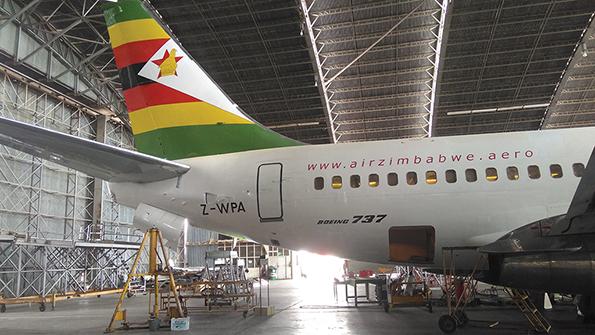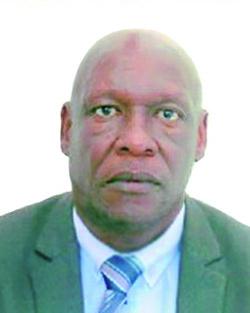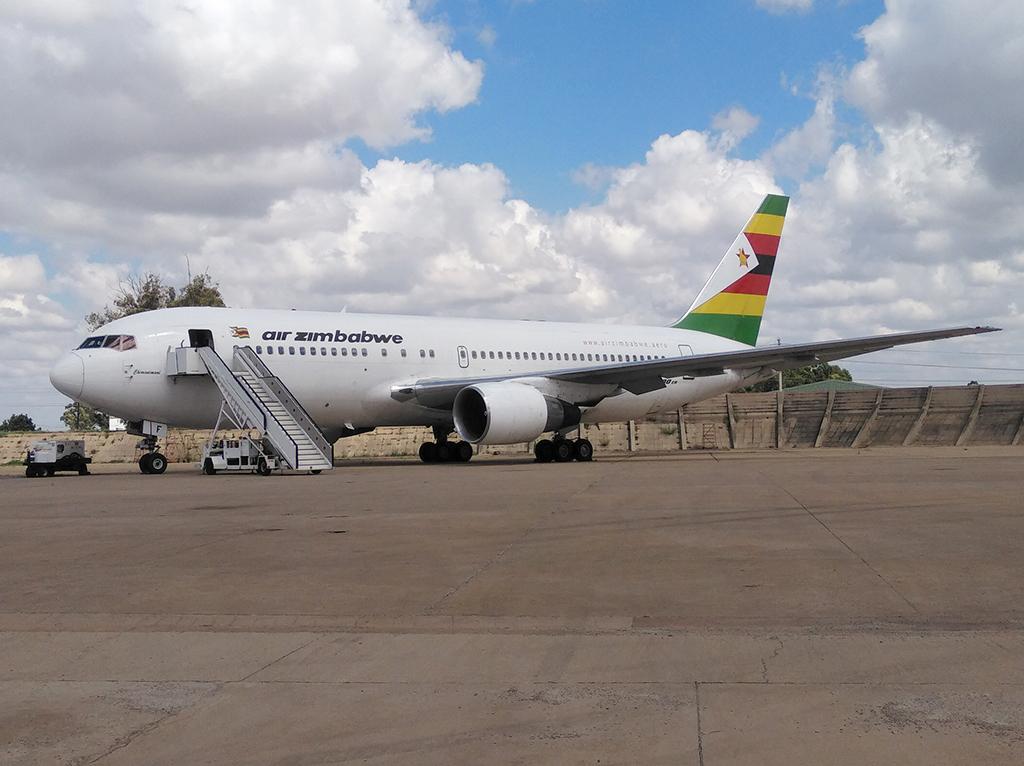
Credit: Air Zimbabwe
92 engine retirements are expected in Africa this year. The top in-service models are the CFM56 followed by regional aircraft engine types the PW100 and the PT6A.Banned from flying into Europe and battling the effects of the COVID-19 pandemic, Air Zimbabwe is facing challenges. In an interview with Inside MRO’s James Pozzi, Phillip Zvasiya, the airline’s maintenance manager, details how it is looking to overcome these issues while upgrading its MRO offerings.
How will the airline’s April 2020 financial recovery plan affect Air Zimbabwe’s maintenance division?
The grounding of all operations gave us an opportunity to finish major maintenance on some of our fleet without commercial pressure. For example, we successfully completed a D check on a Boeing 737-200, and it is now serviceable, awaiting resumption of operations. We do not anticipate a major impact on maintenance, as our recovery plan for operations post-COVID-19 will be phased, starting with domestic, then regional routes, while charter operations also continue. We are adequately prepared in every aspect to ensure a smooth flow of operations in our maintenance division.

Does the airline have plans to meet European Union Aviation Safety Agency (EASA) standards to ensure its ban from flying into Europe is lifted?
Yes, we have those plans, and it is already a work in progress as we seek to address findings to meet the Third Country Operator’s license approval. In this quest so far, we regained our International Air Transport Association Operational Safety Audit certification in December 2019.
Do you expect the pandemic to lead to any of Air Zimbabwe’s aircraft being retired or will all of the fleet resume service?
At the onset of the travel restrictions and lockdowns, we parked all our aircraft at our hangars here in Harare, and they have been undergoing active maintenance. We expect all our fleet to resume service with an additional Embraer 145 with the resumption of flights. A few more lease-ins or procurements may be added depending on demand for travel, in exchange for the Boeing 777s, which we are leasing out.
Which new technologies are you looking to add for your maintenance operation?
In the area of new technologies, we are looking at ways to upgrade our in-house maintenance software, as well as to upgrade an ATEC 5000, used to test avionics equipment of both the Airbus and Boeing families of aircraft.

What is Air Zimbabwe’s experience of recruiting engineers and maintenance technicians? Has this proved challenging?
Over the years, Air Zimbabwe has been active in recruiting and producing highly qualified and sought-after engineers in Africa and beyond from our in-house training programs. We have very highly qualified local engineers with vast experience with A, B, C and D checks on the Boeing fleet. Our engineers have received commendations of excellence from the world’s leading aircraft manufacturers, such as Boeing, for their sterling work in aircraft modifications and mandatory checks and services. Therefore, we have not experienced any challenges in that regard. In fact, we have ongoing apprenticeship training and partnerships with some universities and tertiary institutions here in Zimbabwe through the Ministry of Higher and Tertiary Education. But of course, achieving EASA certification is critical.
Are you looking to grow your third-party services for other airlines?
Certainly, we are looking to grow our third-party services for other airlines. But I must mention that we also offer third-party technical services to industries beyond aviation such as the motor trade, mining, engineering, manufacturing and construction, among others.
Air Zimbabwe Fact File
Founded: The airline was founded in 1980, replacing the previous entity formed when the country was known as Rhodesia. Air Zimbabwe has been government-owned since 2014, but plans have been ongoing to partially privatize the airline. Since May 2017, the carrier has been on a banned travel list for failing to meet EU safety standards, something that the airline says it is working to overcome.
Fleet: Air Zimbabwe operates nine aircraft, consisting of two Airbus A320-200s, two Boeing 737-200s, two 767-200s, one 777-200, one Embraer 145 and a single Xian MA60 turboprop.
In-house maintenance: Around 95% of the airline’s maintenance work is carried out in-house, with the remaining 5% outsourced to partners including South African Airways Technical, EgyptAir and Asia Aero Technic.
Capabilities: Air Zimbabwe’s maintenance arm comprises three areas: engineering maintenance control, aircraft maintenance and workshops that provide MRO and general engineering services. It also offers several nondestructive testing services.
Hangars: The airline operates its main hangar and line station in Zimbabwe’s capital, Harare.




